We recently sat down with Jean-Pierre Isbouts, D. Litt., Fielding University Press editor and Faculty Emerit of the School of Leadership Studies, to discuss two achievements.
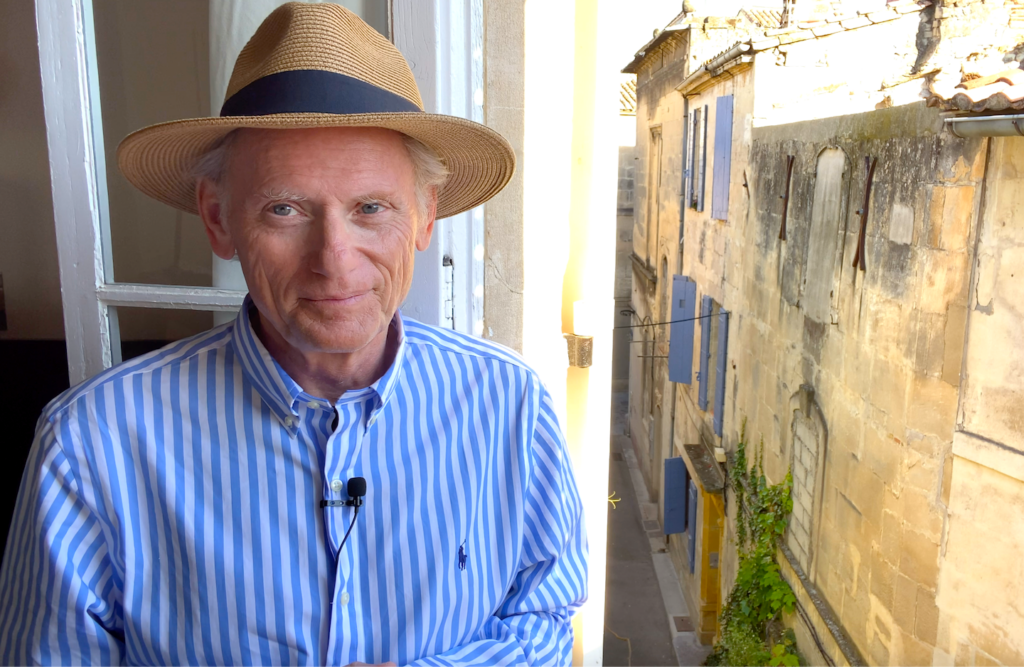
Dr. Jean-PIerre Isbouts near the location of Vincent’s “Yellow House” in Arles, France
His recent publication, The Fractured Kingdom, is an attempt to bridge the gulf between conservative and progressive Christians by returning to the essential tenets of the Historical Jesus: social justice, compassion, and faith. Additionally, Dr. Isbouts, in partnership with The Great Courses and Wondrium, earned a Gold Telly Award for “In the Footsteps of Vincent van Gogh.”
What inspired you to write and release The Fractured Kingdom?
One of my principal scholarly interests as a historian is the figure of the historical Jesus, beginning with Young Jesus in 2007 and continuing with the National Geographic publication of In the Footsteps of Jesus in 2011 and 2016, which became a bestseller. The focal point of these books is that Jesus lived in a time of an immense socio-economic crisis, prompted by ruinous taxes imposed on the Galilean peasants by the Herodian regime. The purpose of this tax policy was to evict the farmers from their lands, and to consolidate these plots into huge estates, or agroi as the evangelists call them, run by stewards or oikonomoi. I believe that this great social injustice motivated Jesus’ ministry and prompted him to formulate his vision of the Kingdom of God. Unfortunately, it seems that modern Christianity has utterly forgotten about the key tenets of that vision, which was rooted in the three principles of the Torah: social justice, compassion for one another, and faith in God.
Why is The Fractured Kingdom relevant to today’s society?
Our world, beset by poverty, health crises, famine, and a deep chasm between have’s and have-not’s, is a world that Jesus would have recognized. The society he confronted was very similar, with thousands of displaced Galileans who had lost their home and their land, and who were hungry and dispossessed. But Christianity today, with some notable exceptions, seems entirely focused on waging our nation’s culture wars, obsessed with gender issues and who we are allowed to love. As The Fractured Kingdom shows, that is not what Jesus or his ministry is about. What Jesus asked us to do is try to build a more just and equitable society for all, regardless of our station or the color of our skin. That is why the true nature of his Kingdom philosophy is so very relevant to our world today, and particularly for Christians who have embraced ideas on the far right of the political spectrum.
What do you hope readers glean from The Fractured Kingdom?
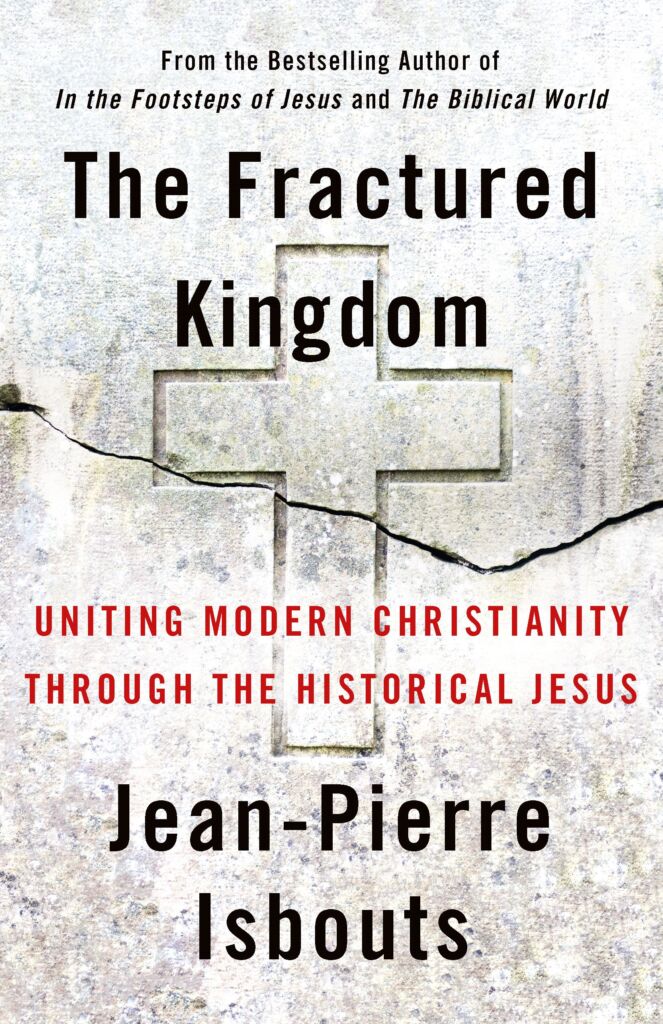 The book is an attempt to restore the true meaning of Christianity by trying to understand the character of the historical Jesus and the motives that prompted him to embark on his ministry; above all, on his focus on agapè, on selfless love. Unfortunately, these ideas have often been obscured by centuries of Church teachings and doctrine. In a sense, we must “excavate” the historical Jesus, to quote John-Dominic Crossan, in order to truly grasp what Jesus aimed to achieve.
The book is an attempt to restore the true meaning of Christianity by trying to understand the character of the historical Jesus and the motives that prompted him to embark on his ministry; above all, on his focus on agapè, on selfless love. Unfortunately, these ideas have often been obscured by centuries of Church teachings and doctrine. In a sense, we must “excavate” the historical Jesus, to quote John-Dominic Crossan, in order to truly grasp what Jesus aimed to achieve.
Is there anything else you would like to share about The Fractured Kingdom?
Parallel to the publication of the book, I was also very fortunate to be able to write, host and direct a 15-episode TV series, “Searching for the Historical Jesus,” for The Great Courses and their Wondrium streaming platform. We filmed that series on location in Israel, Jordan, Greece, and Turkey in 2022, which was a wonderful experience. The reviews of that series have been very good, which hopefully means that people are genuinely intrigued by the figure of the historical Jesus.
Switching gears to the Gold Telly Award for your Van Gogh story, could you explain to readers what led to this award?
My first program for The Great Courses was a 24-episode series called “The History and Archaeology of the Bible,” which we shot in the midst of the early COVID outbreak in 2020 in their studios in Virginia. It was a difficult studio shoot, with only the camera folks on set, and I remember I had to put on my own makeup, given the social distancing requirements! My wife Cathie had to help me with that remotely via FaceTime. But I really wanted to include actual footage of the archaeological sites in Egypt and Israel. The problem was that all of Israel and Egypt were in lockdown. So, I called upon my dear friend Michael Shubitz, a renowned Israeli cinematographer, and he shot stunning footage of these biblical sites, with me directing him remotely. The best part was that all the sites were in lockdown, so he could shoot these places without a single tourist present! That footage, much of it shot with drones, is absolutely unique. The series became a top seller for The Great Courses. In response, they asked me if I could do another series, using the same production values. Knowing my background as an art historian, they wanted to have a series called, “In the Footsteps of Vincent van Gogh.” And that’s how that started.
Explain more of your work with Van Gogh and what led to this award journey.
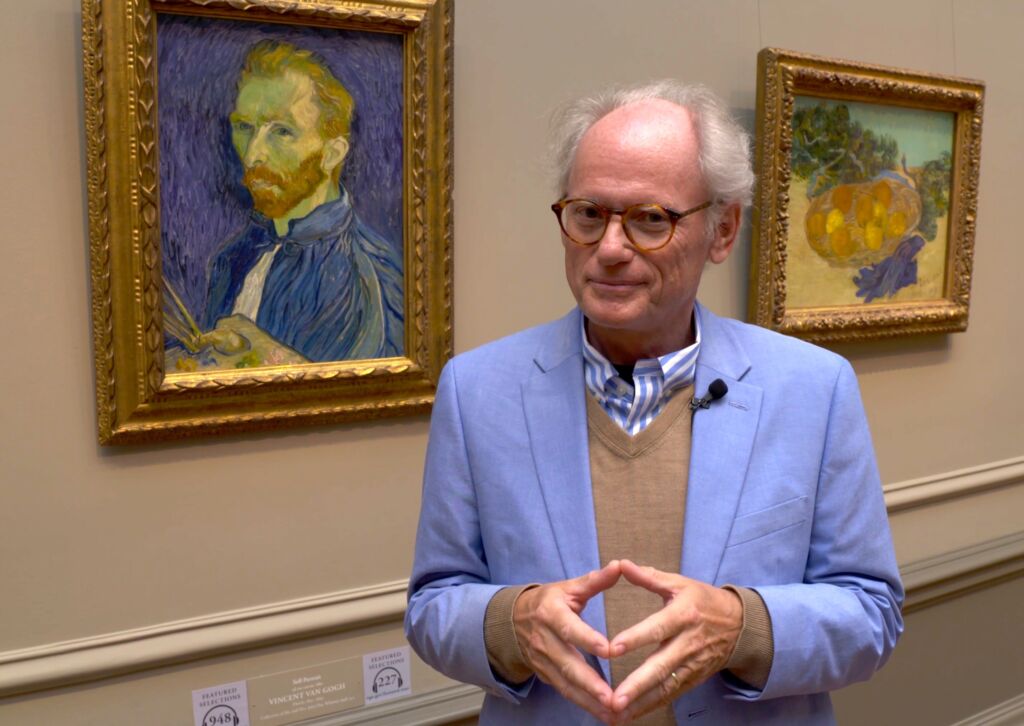
At the National Gallery in Washington, D.C.
You may not know this, but I grew up in the same region where Vincent began working as an artist: the Brabant region in the south of the Netherlands. As a young boy, I once met an old farmer who remembered collecting birds’ nests for Vincent for a few pennies — birds’ nests were one of his still life subjects then. Of course, I recognize many of the locations in the paintings of his Dutch period. Based on that, I wrote the screenplay for 15 episodes, which we then filmed on location in Holland, Belgium, and France, including such famous places as Arles, Saint-Rémy, and Auvers-sur-Oise. It was a fantastic shoot, and along the way I interviewed several renowned curators of Van Gogh collections, including the National Gallery in Washington, D.C. The response to this series has been tremendous, and I think that is due to a large part to the stunning footage we were able to film, again using drones. Also, we cast seven different actors as the voices that bring Vincent and his fellow artists and friends to life.
What does it mean to you to receive the Gold Telly Award?
When the Teaching Company (which produces The Great Courses and Wondrium) told me that the Van Gogh series had won a Gold Telly, I was absolutely floored. The Telly Awards is a highly respected national and international competition that typically receives over 12,000 entries from 5 continents. I did not know that the Teaching Company submitted my series, but they are obviously just as ecstatic about this great honor as I am. One factor, I think, is the fact that I spent two episodes reconstructing the still mysterious events surrounding Vincent’s death, almost hour by hour, all filmed on location in Paris and Auvers-sur-Oise. You hear Vincent in his own words, based on his letters to his brother Theo, and brought to life by a wonderful actor, Mike Cantrell. And throughout, I use the music of the period that Vincent may have heard in Paris, including works by Debussy, Fauré, Satie, Franck, and Ravel. It all adds up to a total immersion in the world of Van Gogh.
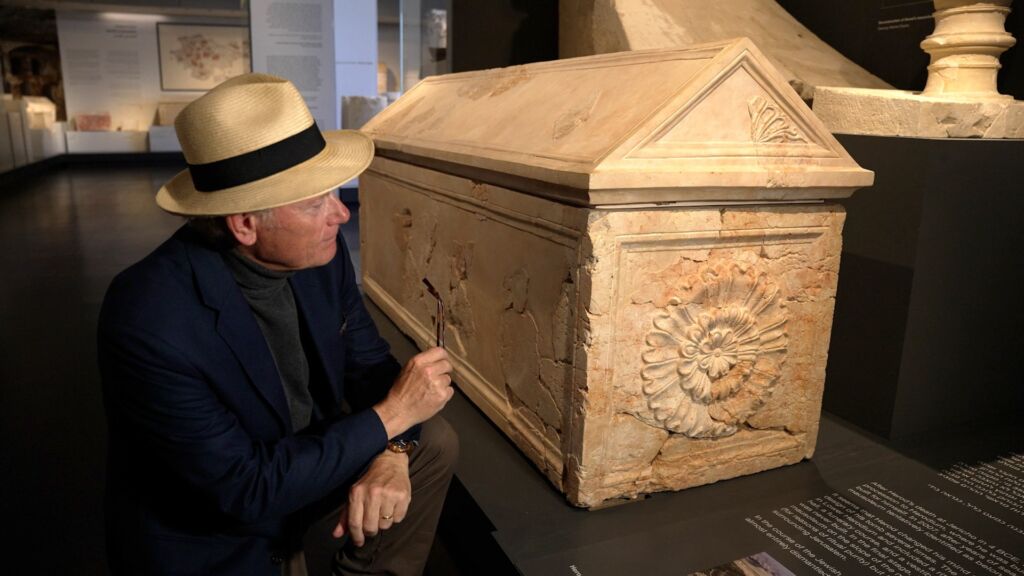
With the sarcophagus of King Herod the Great in the Israel Museum, Jerusalem
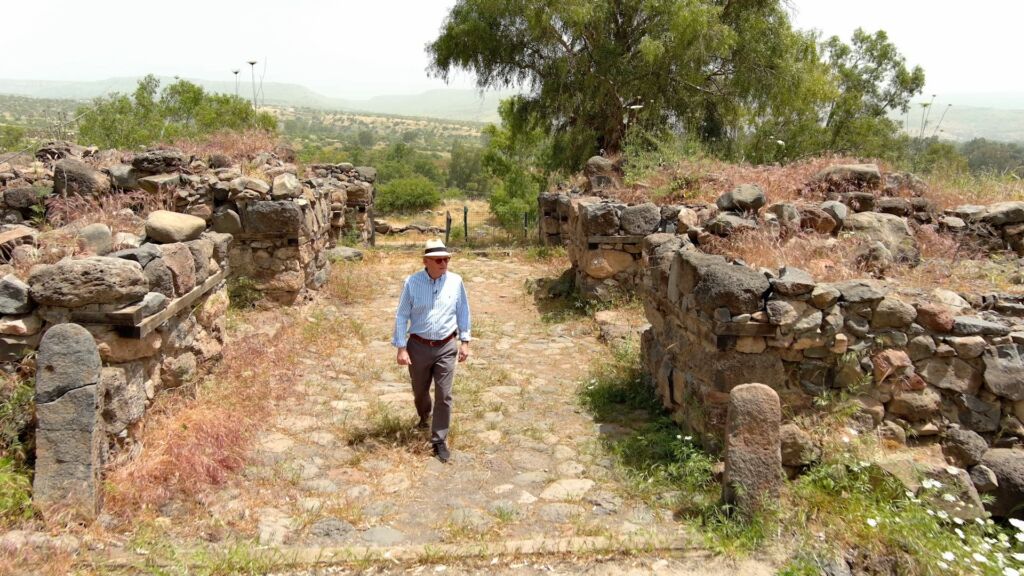
The archaeological excavations of ancient Bethsaida in Israel
About Jean-Pierre Isbouts, D.Litt.
Jean-Pierre Isbouts is the Managing Editor of the Fielding University Press and Faculty Emerit of the School of Leadership Studies at Fielding Graduate University. A humanities scholar, his research has been devoted to biblical archaeology, Renaissance Florence and 19th century Europe.
Jean-Pierre was born in Eindhoven, Holland and studied Attic Greek and Latin before continuing in archaeology, art history and musicology at Leyden University. He completed his doctoral research on the 19th century architectural firm of Carrère & Hastings at Columbia University in New York. He then joined the American Council for the Arts (ACA) in New York City, active in a number of federally-funded arts programs.
As a musicologist, Dr. Isbouts has produced recordings of Bach, Corelli, Handel, Tchaikovsky, Satie, Franck and Debussy with the Los Angeles Chamber Orchestra, the Amsterdam Baroque Orchestra, and other soloists and ensembles.
An award-winning filmmaker, Jean-Pierre has directed stars, including Leonard Nimoy, Charlton Heston and Dick van Dyke, working with Hollywood studios such as Disney, Castle Rock Entertainment, Hallmark and Agamemnon Studios. His TV programs have been broadcast on ABC, A&E, CNBC, History Channel, Hallmark Channel and PBS stations, as well as scores of television networks in Europe and Asia.
His first book, Charlton Heston’s Hollywood, was published in 1998. Based on many hours of interviews with Charlton Heston, the book chronicles the astonishing transformation of post-war American cinema through the eyes of the only actor whose career spanned from Cecil B. DeMille to James Cameron.
In 2007, National Geographic Books published his first major work, The Biblical World, which became a worldwide bestseller, and the first of several books for National Geographic Society. The success of Biblical World was followed by the 2012 publication of In the Footsteps of Jesus, which sold over a 100,000 copies in the first 8 weeks of release–an unprecedented record for a large hard-cover book at a $40 price point.
In 2013, Jean-Pierre wrote his in-depth study of Leonardo da Vinci’s Mona Lisa (“The Mona Lisa Myth”), written with Dr. Christopher Brown, and began a new work on the history of Christianity. In November of 2013, National Geographic Books published Jean-Pierre’s Who’s Who in the Bible, a major reference work comprising over 2,000 men and women in the Hebrew Scriptures and New Testament.
Join Over 7,500 Fielding Alumni Located Around The World!
Change the world. Start with yours.™
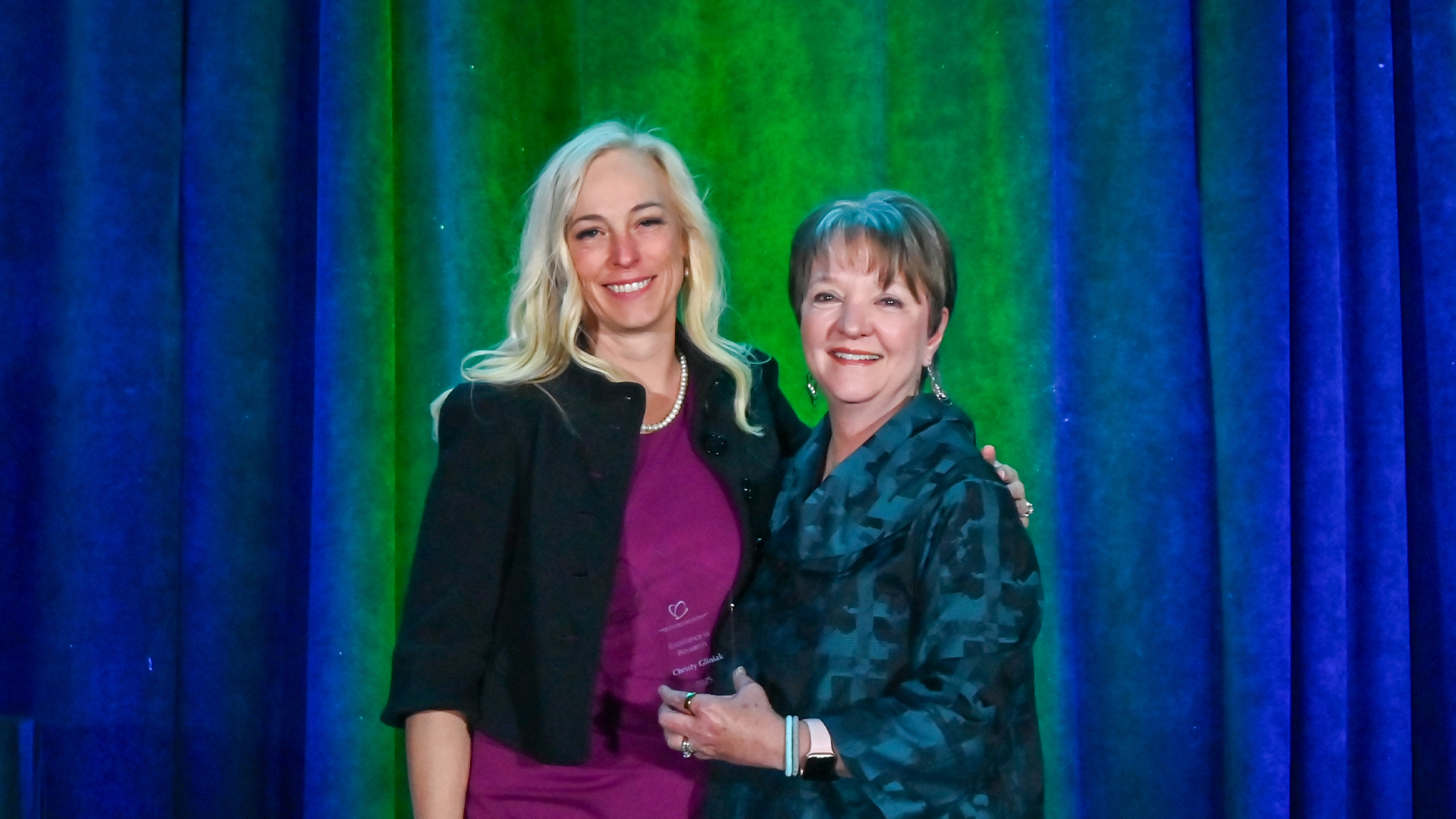





Get Social